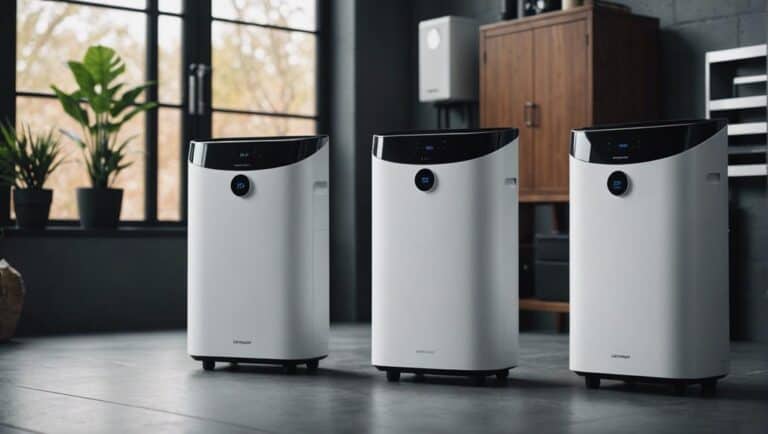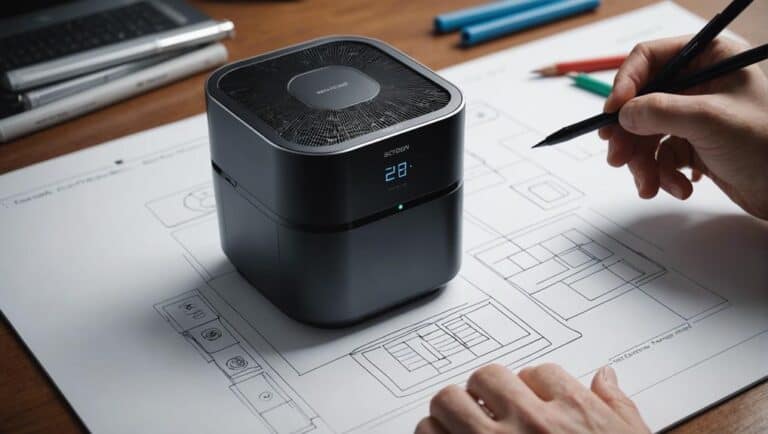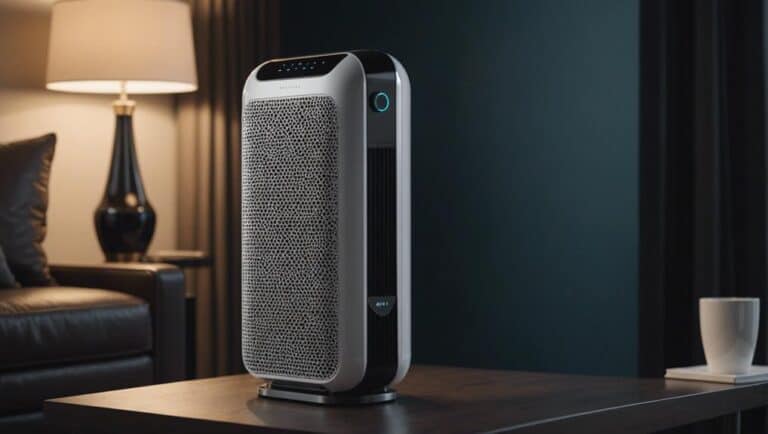How to Remove Cat Hair from Furniture: A Quick and Effective Guide
Removing pet hair from furniture is a common challenge for cat owners. Cat hair can cling to every surface in your home, from the couch to the curtains, and can be a nuisance to clean. Knowing how to effectively remove cat hair not only helps keep your home clean, but it also can reduce allergens and maintain the fabric’s condition. With the right techniques, it’s possible to minimize the presence of cat hair on your furniture. Regular maintenance and a thorough cleaning routine can make a significant difference in managing pet fur.

We understand that cat hair removal can seem daunting due to the sheer amount of fur our feline friends shed, especially during certain seasons. Various methods can be employed for this task, from simple manual techniques to more sophisticated mechanical tools. Before we begin the cleaning process, preparation is key — ensuring we have the right tools on hand, understanding the types of surfaces we are dealing with, and knowing the shedding patterns of our cats helps tailor our approach for more effective results.
Key Takeaways
- Regular cleaning routines are crucial for removing cat hair from furniture effectively.
- A combination of manual and mechanical methods may be necessary for handling different surfaces.
- Understanding your cat’s shedding and having the right tools will streamline the cleaning process.
Understanding Cat Hair and Shedding

When we consider maintaining a clean home with pets, understanding our furry friends’ shedding habits and the nature of cat hair is essential. We’ll look into why cats shed and how regular grooming can significantly mitigate the impact of shedding on our home environment.
The Nature of Cat Hair and Shedding
Cat hair: It consists of various types of fur that make up a cat’s coat, including a soft undercoat and stiffer, longer guard hairs. Shedding is a natural process where cats lose old or damaged hair. Factors influencing shedding include the change of seasons, the cat’s overall health, and its breed.
- Seasonal Shedding: Cats tend to shed more in spring and fall, responding to changes in daylight, which affects their hair growth cycle.
- Health-Related Shedding: Sometimes an increase in shedding can be a sign of nutritional deficiencies or health issues.
Grooming and its Impact on Shedding
Grooming plays a significant role in managing shedding. By brushing our cats regularly, we help remove loose hair and reduce the amount that ends up on our furniture. Brushing distributes a cat’s natural oils, promoting a healthier and shinier coat.
- Brush Types: Different brushes, like deshedding tools or soft-bristle brushes, are tailored for varying degrees of shedding and hair types.
- Frequency of Grooming: Depending on the breed, cats may need daily to weekly brushing to effectively manage shedding.
By understanding the ins and outs of cat hair and its shedding patterns, we’re better equipped to keep our homes clean and our pets healthy.
Preparation Before Cleaning
Before we start the cleaning process, it’s essential to have the right tools at hand and to understand the types of materials we’re dealing with. This knowledge will guide us in choosing the correct cleaning methods to effectively remove cat hair without damaging our furniture.
Selecting the Right Cleaning Tools
We need to carefully choose tools that are effective at removing cat hair while being suitable for the furniture’s material. Here are some tools we might consider:
- Vacuum Cleaners: Preferably one designed for pet hair that often comes with attachments for upholstery.
- Lint Rollers: Ideal for quick touch-ups, especially on flat surfaces.
- Rubber Brooms: Effective for gathering stubborn fur on carpets and rugs.
- Dry Sponges: Can lift pet hair from fabrics when used gently.
- Anti-Static Sprays: Helpful to release cat hair from furniture before cleaning.
Identifying Furniture Materials
Our furniture’s material is a crucial factor in deciding which cleaning tools and methods to use. Here’s how we can assess our furniture:
- Fabric Upholstery: Includes materials like cotton, linen, and microfiber. Check care labels for cleaning guidelines.
- Leather and Faux Leather: Requires a gentle touch. Avoid tools that may scratch or tear the surface.
- Wooden and Hard Surfaces: Less prone to hair clinging but still needs to be cleaned with suitable tools that do not scratch or damage the finish.
Understanding our furniture’s fabric types and materials ensures we not only effectively clean up cat hair but also maintain the integrity and longevity of our furniture pieces.
Manual Removal Techniques
When faced with cat hair on furniture, we have several manual techniques at our disposal. Each method offers a practical solution for different types of furniture and levels of fur accumulation. Let’s explore some effective options.
Using Rubber Gloves
For a quick and easy solution, rubber gloves can be very effective. We ensure that the gloves are slightly damp, then run our hands over the surface of the furniture. The friction between the damp rubber glove and the fabric helps lift the hair, which then sticks to the gloves.
Lint Roller Method
Lint rollers are a staple in pet homes for good reason. By simply rolling them across the furniture, the sticky sheets pick up cat hair with precision. It is vital that we replace the sheets frequently to maintain effectiveness. These rollers are especially suitable for delicate fabrics where other methods might be too harsh.
Utilizing Sticky Tape
When a lint roller is not available, sticky tape can be a good alternative. We can wrap the tape around our hands with the sticky side out and pat down the furniture surfaces. This is a particularly useful method for hard-to-reach areas where rollers might not fit.
Mechanical and Tech Approaches
In our search for an immaculate home, we turn to mechanical and technological methods that promise to rid our furniture of pet hair with efficiency. Let us explore the specifics of vacuuming and innovative products designed for this very purpose.
Vacuuming Furniture and Upholstery
Vacuum cleaners are our first line of defense against pet hair. For best results, we suggest using a vacuum cleaner with a specialized upholstery attachment. These attachments are designed to navigate the contours of furniture and lift pet hair effectively. To optimize the process, we recommend vacuuming in multiple directions to capture more hair. Regular vacuuming not only keeps your furniture clean but also helps in maintaining a healthier living environment by removing potential allergens.
Innovative Pet Hair Removal Products
The tech industry has introduced a variety of products specifically aimed at pet hair removal. These range from lint rollers with an adhesive surface to more high-tech gadgets like pet hair removal brushes that generate static electricity to gather hair. Some products like the lint roller are simple yet surprisingly effective when used regularly. For a more sophisticated approach, consider devices that use electrostatic principles or suction technology to attract and capture pet hair from your upholstery with minimal effort. These innovations can greatly reduce the time and energy we spend on cleaning after our furry friends.
Chemical and Homemade Solutions
In addressing cat hair on furniture, we can effectively utilize both chemical solutions and homemade hacks. These methods leverage the properties of certain substances to reduce static and enhance hair removal.
Fabric Softeners and Their Role
Fabric softeners play a crucial role beyond just making our clothes smell fresh. They can significantly reduce static cling, a common culprit that makes cat hair stick to furniture. To use, we dilute a tablespoon of liquid fabric softener in a cup of water and apply it with a spray bottle lightly over the upholstered surface. This solution helps in relaxing the fabric, thereby loosening the pet hair.
- Steps for Using Fabric Softener:
- Mix 1 tablespoon of fabric softener with 1 cup of water.
- Pour the mixture into a spray bottle.
- Spray lightly onto the furniture.
- Wait a few minutes, then wipe or vacuum up the hair.
DIY Static and Hair Removal Hacks
We can create our own anti-static spray using simple ingredients, significantly aiding in hair removal. Homemade spray solutions can consist of a mixture of water and fabric softener or even white vinegar to combat static electricity. These sprays function like a fabric freshener while also tackling static, making it easier to remove stuck fur.
- Homemade Anti-Static Spray Recipe:
- Add 1 tablespoon of white vinegar to a cup of water.
- Transfer to a spray bottle.
- Spritz lightly on furniture surfaces.
- Allow it to sit, then gently wipe off or vacuum the loose hairs.
Using fabric softener sheets directly on furniture can also be effective. We rub the sheets on the surfaces where cat hair is present, and the sheets’ anti-static properties help lift the hair off.
Remember, always test any solution on a small, inconspicuous area of your furniture to ensure there’s no adverse reaction to the material.
Care and Maintenance
In addressing cat hair on furniture, we find that consistency in cleaning and strategic prevention are key. By establishing regular cleaning practices and taking steps to prevent hair accumulation, we safeguard the longevity and appearance of our furniture.
Regular Furniture Cleaning Practices
We begin by incorporating regular vacuuming into our maintenance routine. By doing so, we minimize the presence of cat hair. It is prudent to vacuum at least once a week, and more often if our pets shed excessively. To enhance the cleaning process, we can also use specific vacuum attachments designed to pick up pet hair effectively.
For surfaces that are more delicate or intricate, using a dry sponge or lint roller is ideal for lifting and removing hair without causing damage. When dealing with upholstered furniture, a mixture of water and fabric softener can be lightly sprayed to help loosen hair, which can then be easily removed with a cloth.
Preventing Cat Hair Accumulation
To further combat the issue of cat hair, we employ prevention strategies. One effective method is to regularly groom our cats using the appropriate grooming tools. By doing so, we reduce the amount of loose hair that can be transferred onto the furniture.
Additionally, investing in washable furniture covers can shield our couches and chairs. These covers can be easily removed and cleaned, which simplifies the overall maintenance process.
It is also beneficial to treat our furniture with furniture polish after cleaning, as this can help repel pet hair and maintain the material’s condition. Selecting a polish that is non-toxic and pet-friendly ensures that our cats remain safe and our furniture looks its best.
Additional Tips and Tricks
In our efforts to maintain a clean home environment, cat hair on furniture can be a persistent issue. These additional tips and tricks look beyond conventional methods, allowing us to leverage common household items and expert insights for effective hair removal.
Alternative Household Tools for Hair Removal
A broom can be an unexpected ally; we can use rubber brooms with bristles to catch and gather cat hair on upholstery. For smaller jobs, a dry sponge can lift hair from cushions. Regular wiping with a microfiber cloth can also reduce the accumulation of hair, thanks to its electrostatic properties. If we notice cat hair on flat surfaces or floors, laying duct tape sticky-side up can serve as a quick clean-up option.
Expert Advice and Unique Solutions
Experts, such as those from Apartment Therapy, recommend creating our own hair removal toolkit. Items like a squeegee can be effective at pulling hair from carpets, while a pumice stone can gently remove pet hair from more sturdy fabric surfaces. When consulting with an expert or a commission on pet accessories, we often encounter various specialized hair removal tools designed to tackle this exact problem. It’s always recommended that we consider integrating these into our cleaning regimens.
Addressing Different Types of Surfaces
When removing cat hair from furniture, it’s crucial to consider the type of surface we’re dealing with. Different materials and finishes require different approaches for effective hair removal.
Upholstery and Fabric Surfaces
For upholstery and fabric surfaces like sofas and curtains, we start with a lint roller or a fabric-specific pet hair remover to gently lift and collect the hairs. If pet hair is deeply embedded in the fibers of our carpet or fabric upholstery, we can also use a pumice stone or a dampened rubber glove to attract the hair. Running your hands over the surface, the friction will cause the hair to clump making it easier to pick up. Be sure to test any tool on a discrete area first to ensure it does not damage the fabric.
Hard Surfaces and Floors
When tackling hard surfaces and floors, including laminate and hardwood, our approach is slightly different. A vacuum cleaner with a hose attachment can be an efficient way to remove loose cat hair from these harder surfaces. For laminate, a microfiber mop can be especially effective as it uses static electricity to trap hair. Moreover, a slightly dampened mop can grab onto pet hair without risking damage to our hardwood surfaces. Always remember to move the mop in the direction of the floorboards to capture more hair and prevent scratching.
Aftercare and Preventive Measures
Once we’ve dealt with cat hair on furniture, it’s essential to take steps to manage future shedding and maintain our living spaces. Regular grooming and cleanliness can significantly minimize the hassle of pet hair cleanup.
Caring for Your Cat’s Health
Regular Grooming: Regular brushing of our cats is crucial; not only does it keep their coats healthy, but it also reduces the amount of hair they shed. Depending on the cat’s breed, we may need to brush more frequently. For long-haired breeds, daily brushing may be necessary, while short-haired cats might only require grooming a few times a week.
Healthy Diet: A nutritious diet contributes to our cats’ overall health and can lead to a healthier coat, which, in turn, can minimize shedding. Ensure they’re receiving the right balance of omega-3 fatty acids, which can help improve the condition of their fur.
Maintaining a Clean Environment
Furniture Care: For sofas and pillows, using slipcovers can be an efficient way to manage cat hair. They are easy to remove and launder, cutting down the time we spend cleaning. Applying furniture polish to hardwood can also make it easier to remove hair by simply wiping it away.
Routine Cleaning: We should incorporate the following into our cleaning routine to keep pet hair at bay:
- Weekly vacuuming of furniture, especially in the crevices where hair accumulates.
- Using a rubber broom on hardwood to gather hair more effectively than traditional brooms.
- Regular laundering of blankets in hot water, as this can help remove pet hair.
By taking proactive steps with grooming and cleaning, we can substantially reduce the impact of cat hair on our furniture and living environment, making our home more comfortable for us and our feline friends.





